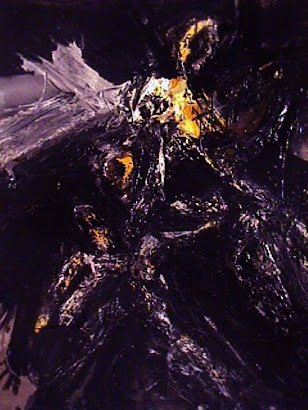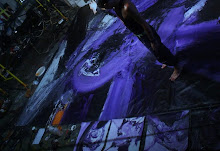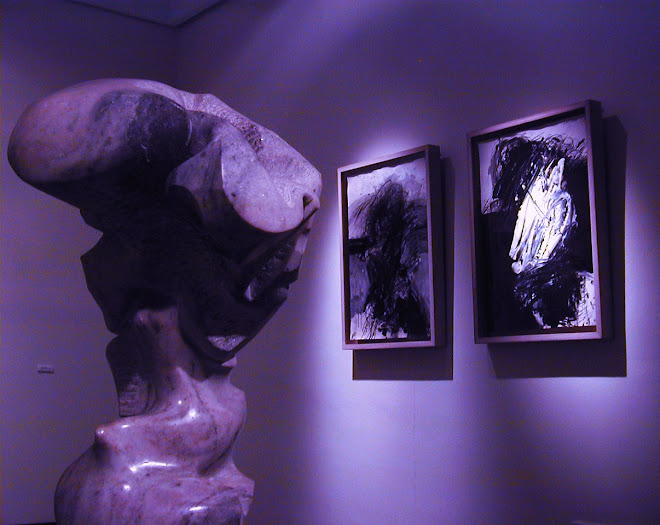.
.
.
Appropriation of visual culture and art, in some form or another,
has always been part of human history. Art History and art historical
practice has a long tradition of borrowing and using styles and forms from
what came before. Students of art and established artists have always learned and progressed by copying and borrowing.
The act of making art and visual culture began with appropriation; borrowing images, sounds, concepts from the surrounding world and re-interpreting them as art. Appropriation can be seen as the way in which humans progress and learn.
Some might interpret Leonardo da Vinci as an appropriation artist.
Da Vinci used recombinant methods of appropriation, borrowing from sources
as diverse as biology, mathematics, engineering and art, and then synthesizing them in to inventions and works of art. Charles Darwin examined, recontextualized and disseminated artistic etchings of science and nature to prove his Theory of Evolution.
In the early twentieth century Pablo Picasso and Georges Braque
appropriated objects from a non-art context into their work.
In 1912, Picasso pasted a piece of oil cloth onto the canvas. Subsequent compositions, such as Guitar, Newspaper, Glass and Bottle (1913) in which Picasso used newspaper clippings to create forms, became categorized as synthetic cubism. The two artists incorporated aspects of the "real world" into their canvases, opening up discussion of signification and artistic representation.
Five years later, in 1917, Marcel Duchamp introduced the idea of the readymade. That year he entered Fountain into the American Society of Independent Artists exhibition. The work consisted of a urinal, lying on its side atop a pedestal with the signature "R. Mutt". The urinal appeared neither original nor rare, Duchamp's "creativity" as an artist lies in the gesture of selecting the urinal as an art piece and displaying it in an artistic context. Duchamp also went so far as to use existing art in his work, appropriating an apparent copy of the Mona Lisa into his piece, L.H.O.O.Q. Recent speculation regarding Duchamp's appropriated urinal claimed that the urinal was "non-standard" and "non-functional", and that Duchamp "allegedly custom-designed it along with his other supposed readymades,"[citation needed] however, this has never been substantiated.
The Dada movement (including Duchamp as an associate) continued with the appropriation of everyday objects, but their appropriation did not attempt to elevate the "low" to "high" art status, rather it produced art in which chance and randomness formed the basis of creation. Dada artists included Hugo Ball, Emmy Hennings, Jean Arp, Hans Richter, Richard Huelsenbeck, André Breton, Tristan Tzara, and Francis Picabia. A reaction to oppressive intellectual rigidity in both art and everyday society, Dada works featured deliberate irrationality and the rejection of the prevailing standards of art. Kurt Schwitters, who produced art at the same time as the Dadaists, shows a similar sense of the bizarre in his "Merz " works. He constructed these from found objects, and they took the form of large constructions that later generations would call installations.
The Surrealists, coming after the Dada movement, also incorporated the use of "found" objects such as Méret Oppenheim's Object (Luncheon in Fur) (1936). These objects took on new meaning when combined with other unlikely and unsettling objects.
In 1938 Joseph Cornell produced what might be considered the first work of film appropriation in his randomly cut and reconstructed film 'Rose Hobart'. This work was to inspire later video artists.
In the 1950s Robert Rauschenberg used what he dubbed "combines", literally combining readymade objects such as tires or beds, painting, silk-screens, collage, and photography. Similarly, Jasper Johns, working at the same time as Rauschenberg, incorporated found objects into his work. Johns also appropriated symbolic images such as the American flag or the "target" symbol into his work.
The Fluxus art movement also utilised appropriation: its members blended different artistic disciplines including visual art, music, and literature. Throughout the 1960s and 1970s they staged "action" events, engaged in politics and public speaking, and produced sculptural works featuring unconventional materials. The group even appropriated the postal system in developing mail art. The performances sought to elevate the banal by appropriating it as "art" and dissembling the high culture of serious music.
Along with artists such as Roy Lichtenstein and Claes Oldenburg, Andy Warhol appropriated images from commercial art and popular culture as well as the techniques of these industries. Often called "pop artists", they saw mass popular culture as the main vernacular culture, shared by all irrespective of education. These artists fully engaged with the ephemera produced from this mass-produced culture, embracing expendability and distancing themselves from the evidence of an artist's hand.
In 1958 Bruce Conner produced the influential 'A Movie' in which he recombined film clips to produce this seminal work that comments on the propensity for humankind toward violence. At the same time Raphael Montanez Ortiz was involved in the 'Destructionist' movement in which objects and film were cut up, taken apart, burned and partially destroyed and then reformed to create new works. In 1958 Ortiz produced "Cowboy and Indian Film', a seminal appropriation film work.
In the late 1970s Dara Birnbaum was working with appropriation to produce feminist works of art. In 1978-79 she produced one of the first video appropriations. 'Technology, Transformation : Wonder Woman' utilised video clips from the Wonder Woman television series.
The term appropriation art was in common use in the 1980s with artists such as Sherrie Levine, who addressed the act of appropriating itself as a theme in art. Levine often quotes entire works in her own work, for example photographing photographs of Walker Evans. Challenging ideas of originality, drawing attention to relations between power, gender and creativity, consumerism and commodity value, the social sources and uses of art, Levine plays with the theme of "almost same".
During the 1970s and 1980s Richard Prince re-photographed advertisements such as for Marlboro cigarettes or photo-journalism shots. Prince's work spoke to issues of materialism and the idea of spectacle over lived experience. His work takes anonymous and ubiquitous cigarette billboard advertising campaigns, elevates the status and focusses our gaze on the images. The viewer questions the concept of masculinity portrayed in these heroic billboards and their relationship to the advertising campaign.
Appropriation artists comment on all aspects of culture and society. Joseph Kosuth appropriated images to engage with philosophy and epistemological theory. Other artists working with appropriation during this time with included Jeff Koons, Barbara Kruger, Greg Colson, and Malcolm Morley.
In the 1990s artists continued to produce appropriation art, using it as a medium to address theories and social issues, rather than focussing on the works themselves. Damian Loeb used film and cinema to comment on themes of simulacrum and reality. Other high-profile artists working at this time included Christian Marclay, Deborah Kass and Damien Hirst.
Artists working today[update] increasingly incorporate and quote from both art and non-art elements. For example, Cory Arcangel incorporates aspects of cultural nostalgia through re-working vintage video games and computer software. Other contemporary appropriation artists include the Chapman brothers, Benjamin Edwards, Joy Garnett, Nikki S. Lee, Paul Pfeiffer, Pierre Huyghe.
.
.
.
Presentación 2016 del libro en DAIN Usina Cultural
-
Con motivo de la primera presentación del 2016 de mi libro, *A PARTIR DE
LAS AUSENCIAS. UNA EXPERIENCIA CON EL ARTE ARGENTINO CONTEMPORÁNEO*, los
invito a...





















